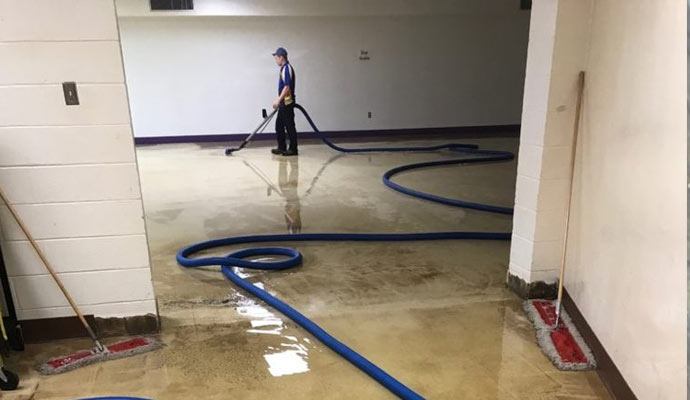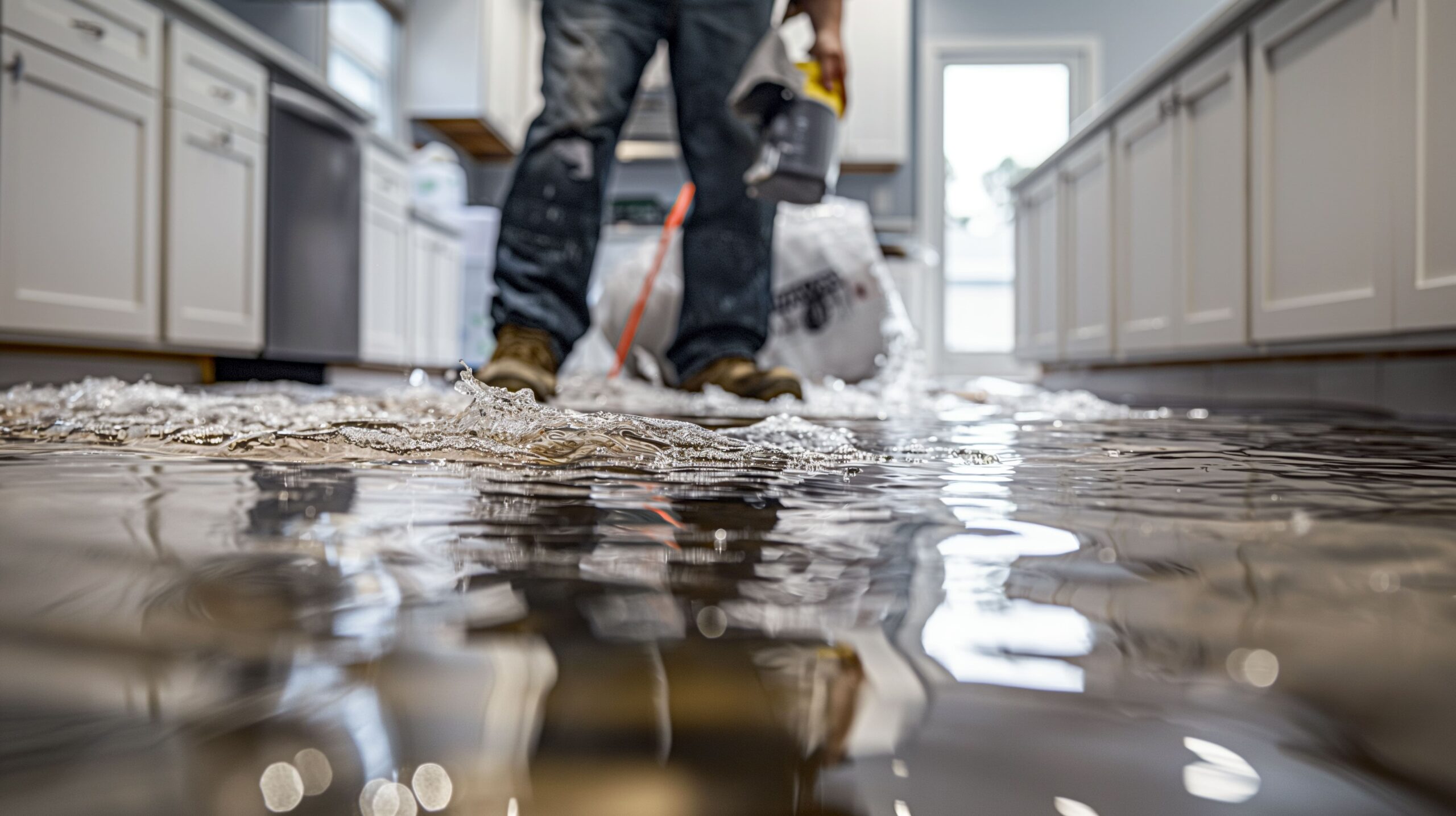Essential steps for faster Flood Cleanup Services results
Wiki Article
Water Damage Restoration 101: Recognizing the Process and Cost
Water damage can strike suddenly, leaving property owners in a state of complication. Recognizing the remediation procedure is vital for efficient recovery. From assessing the damage to picking the appropriate service provider, each action impacts the total outcome and price. Aspects such as the kind of water damage and urgency also play a substantial role. What are the certain techniques utilized in repair, and exactly how can one plan for prospective expenditures?Types of Water Damage
Water damage can arise from different resources, each presenting special challenges for restoration. The three key kinds of water damage are categorized based on contamination degrees: clean water, grey water, and black water. Clean water originates from resources like damaged pipelines or rainwater, presenting very little wellness threats. Gray water, that includes wastewater from sinks or cleaning devices, contains impurities that may cause pain or health problem if ingested. Black water, the most dangerous category, comes from sewer or floodwaters, including dangerous microorganisms and microorganisms. Each kind demands certain repair strategies and safety actions to properly reduce and resolve the damage health and wellness threats. Recognizing these differences is vital for experts and home owners involved in the water damage remediation process.Preliminary Assessment and Inspection
A detailed initial evaluation and assessment are vital steps in the water damage reconstruction process. This phase begins with a specialist examining the level of the damage, recognizing the source of the water intrusion, and figuring out the sort of water included - Water Damage Restoration. Specialists utilize customized equipment to determine dampness degrees in various products, such as wall surfaces, floors, and furniture. Additionally, they examine architectural integrity and potential health and wellness dangers, consisting of mold growth. The searchings for from this assessment inform the reconstruction strategy, leading necessary actions and resource allotment. Exact paperwork of the damage is essential for insurance coverage claims and future referral. In general, this initial analysis lays the groundwork for efficient reconstruction, guaranteeing a comprehensive feedback to the details scenario at hand

Water Extraction Techniques
Complying with the first assessment, efficient water extraction strategies are used to minimize damage and protect against further issues. These strategies entail making use of specific tools such as industrial-grade vacuum cleaners and submersible pumps. The choice of approach relies on the volume of water present and the sort of materials influenced. For standing water, submersible pumps are normally utilized for quick removal, while vacuums are optimal for removing water from carpetings and furniture. Furthermore, advanced approaches like water removal floor coverings might be used for hard-to-reach areas. The objective is to remove as much water as feasible, decreasing the capacity for mold growth and structural damage. Trigger and efficient water removal is necessary in the overall water damage remediation procedure.Drying Out and Dehumidification Process
Once the water removal is total, the drying out and dehumidification process comes to be critical to bring back the afflicted area. This stage generally uses industrial-grade dehumidifiers and air movers to successfully lower dampness levels. The dehumidifiers draw in wet air, eliminating excess humidity, while air movers flow air to increase evaporation. Surveillance devices is often made use of to track moisture and temperature degrees, guaranteeing perfect drying out problems. The period of this process can vary relying on the extent of the water damage and environmental factors. It is important to completely dry all affected products, including walls, floor covering, and home furnishings, to stop mold and mildew growth and architectural damage. Proper execution of this action is vital for an effective repair outcome.Cleaning Up and Sterilizing Damaged Areas

Initial Evaluation and Examination
Before starting any restoration initiatives, a comprehensive first assessment and inspection of the impacted areas are crucial for effective cleaning and sanitizing. This process includes determining the extent of water damage, determining the resource of the water invasion, and reviewing the products influenced. Inspectors typically seek indicators of mold and mildew growth, architectural stability problems, and harmed personal belongings. The analysis likewise includes inspecting wetness degrees utilizing customized equipment to guarantee no covert water pockets continue to be, as these can lead to further complications. Recording the findings is necessary for intending the next action in the remediation process. An in-depth initial analysis makes it possible for repair experts to create a targeted approach for reliable cleansing and sanitizing, eventually reducing damage and wellness threats.Cleaning Techniques and Products
Efficient cleaning and sterilizing of water-damaged areas require a variety of techniques and products customized to the details materials impacted. For permeable surface areas like drywall and carpeting, extraction methods are necessary to eliminate excess moisture, adhered to by deep cleaning with specialized detergents. Non-porous products such as ceramic tile or metal can be cleansed making use of commercial-grade cleansers that effectively remove pollutants. Vapor cleaning is one more efficient strategy, particularly for rugs and upholstery, as it makes use of high temperature levels to remove bacteria and mold. In addition, environmentally friendly products are increasingly preferred for their safety and efficacy. Ultimately, choosing the proper cleaning techniques and items not just assures immediate sanitation yet additionally help in protecting against additional damage and carcinogen linked with water invasion.Sanitization and Disinfection Approaches
When dealing with water damage, appropriate sanitization and sanitation approaches are necessary to ensure the safety and security and wellness of the damaged atmosphere. After initial cleansing, surfaces must be treated with suitable anti-bacterials to eliminate microorganisms, mold and mildew, and germs that thrive in moist conditions. Common methods consist of using EPA-approved chemical disinfectants, which can be applied with spraying or cleaning methods. In addition, ultraviolet (UV) light systems can successfully sterilize locations by counteracting microbes without rough chemicals. The choice of method usually depends upon the sort of products impacted and the level of contamination. Inevitably, comprehensive sanitization not only restores a safe living area however also aids prevent future health threats associated with remaining wetness and mold and mildew development.
Repair Services and Restoration Options

Factors Affecting Restoration Prices
The degree of water damage straight influences the repair sets you back home owners can expect to incur. Elements such as the resource of the water, the period of exposure, and the afflicted materials substantially affect rates. Tidy water damage from a damaged pipe is normally much less costly to restore contrasted to damage caused by sewage (Flood Cleanup Services). Furthermore, the degree of contamination dictates the requirement for specialized cleaning and disposal description solutions, even more boosting costs. Geographic place additionally plays a function, as local labor prices and schedule of remediation services can differ. Finally, the necessity of the response affects expenses; quicker interventions commonly bring about decrease total costs by preventing more damage. Understanding these factors is crucial for home owners when approximating restoration pricesThe three main kinds of water damage are classified based on contamination degrees: tidy water, grey water, and black water. A complete preliminary evaluation and assessment are essential actions in the water damage remediation process. For standing water, completely submersible pumps are normally used for rapid removal, while vacuum cleaners are optimal for extracting water from rugs and furniture. The level of water damage straight influences the reconstruction sets you back homeowners can anticipate to sustain. Clean water damage from a busted pipe is usually less expensive to bring back compared to damage triggered by sewer.
Report this wiki page